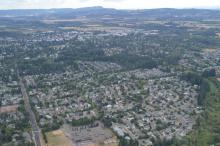Infrastructure Bill’s Broadband Piece Will Help ‘Hasten’ Move to Symmetrical Networks
This piece was authored by Ahmad Hathout, Assistant Editor for Broadband Breakfast. Originally appearing at broadbandbreakfast.com on August 25, 2021, the piece is republished with permission.
The House’s decision to delay passage of the $65 billion spending on broadband included in the infrastructure bill means that final action will wait until Congress returns from its summer break and comes back again for scheduled votes beginning September 20.
Fiber and wireless providers remain optimistic about infrastructure investments in future networks, even as a top lawmaker on Wednesday voiced lingering concerns about spectrum-related provisions in the Senate-passed bill.
On Tuesday, the House passed a budget resolution on a separate $3.5 trillion spending package that is only supported by Democrats. House Speaker Nancy Pelosi put on hold – until September 27 – a commitment to vote on the $1.2 trillion infrastructure package, which enjoys bipartisan support.
The particulars of the broadband segment of the infrastructure measure that passed the Senate on August 10 have been reported, but not yet fully digested. The bill include grants for service providers that provide broadband at 100 Megabits per second (Mbps) download and 20 Mbps upload.
Upload Speeds a Center of Discussion
That in itself would be a significant bump up from the current federal definition of “broadband” as being 25 Mbps down and 3 Mbps up.
But some broadband enthusiasts wanted Congress to push for the symmetrical speeds that some Democratic lawmakers have asked for. Symmetrical speeds, in which the up speed is equal to the down speed, are generally seen to favor fiber deployment.
Still, the final measure that passed the Senate decreed that anything under 100 Mbps down would be categorized as “underserved.”










